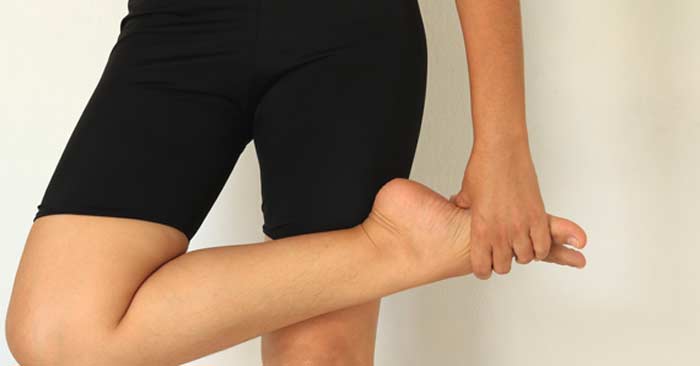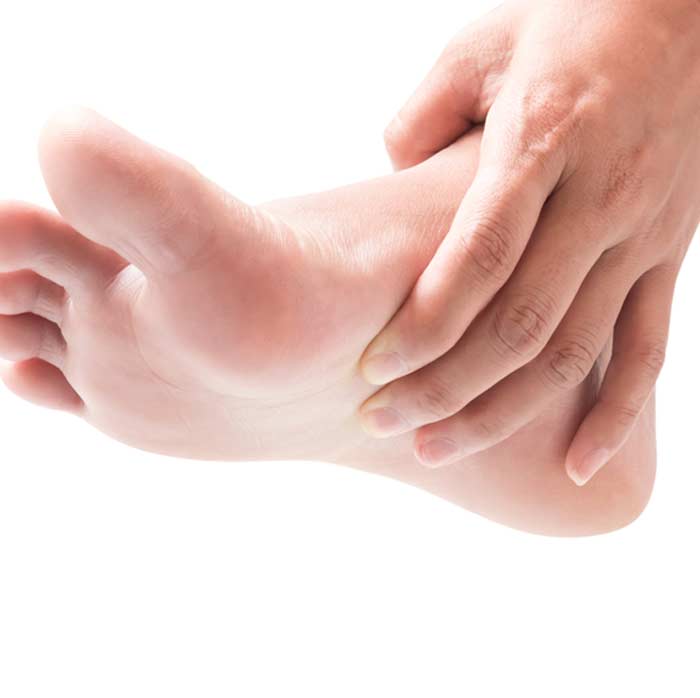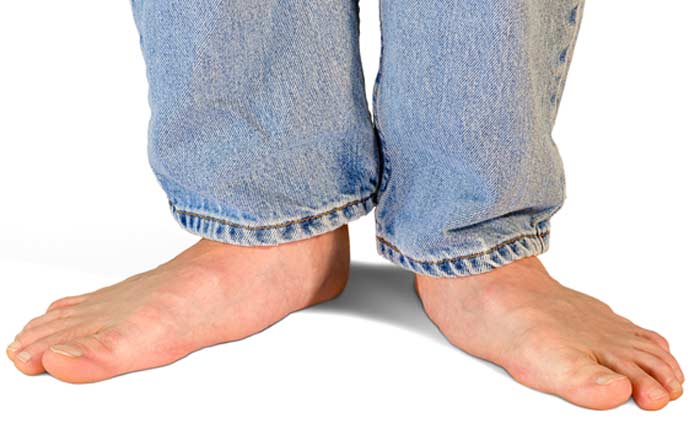
A high navicular bone results in a high arch, while a low navicular bone results in a flat foot.
The arch of the foot is formed by the tarsal and metatarsal bones, and various tendons and ligament strengthen it so it can help the foot support the body’s weight with the least effort. The seven tarsal bones form the mid-foot and heel. One of the seven, the navicular bone determines how high the arch is.
Causes of Flat Feet
Everybody is born with flat feet, for the feet of babies and toddlers have fat pads. Many small children have what doctors call “facultative flat feet,” which means their feet show signs of arches when they stand on tiptoes or sit but appear flat at other times. As a child grows and learns to walk, their foot muscles grow stronger and their fat pads disappear. At this point, their arches are visible all the time.
Some people, however, never develop arches, so their feet remain flat. Flat feet can also develop in older adults. In this case, the tendon that helps support the arch weakens, and the arch falls. A patient with this condition is said to have “fallen arches.” In addition to the aging process, conditions like diabetes, obesity, rheumatoid arthritis, and injury to the ankle or foot, can increase the chances of developing fallen arches. A tendency towards flat feet can run in families.


Cavus Foot
Cavus foot is a condition in which the patient’s arch is abnormally high. It is believed to be caused by weak muscles in the feet and leg. In some cases, the patient has a medical condition like muscular dystrophy or spina bifida that cause such weakness. In a variation called clawfoot, the patient has a high arch accompanied by long, hyperextended toes. Clawfoot is usually a congenital defect, but it can be caused by disorders of the muscles or nerves. In other cases, there is no obvious cause for cavus foot. That is especially likely to be true if the patient has a mild case. Like flat feet, a susceptibility to cavus foot can run in families.
Seeing a Doctor
Both flat feet and high-arched feet can become painful. If the patient’s feet hurt, it’s time to see the doctor. The patient should also call the doctor if their foot also feels tired, is discolored, or if calluses are developing under the arches. Flat feet and high-arched feet can sometimes be accompanied by deformities; if the patient’s foot looks “wrong,” they should have a doctor check it out.
Treatment Options
There is a variety of treatments for both conditions. The doctor will start by recommending non-invasive treatments like physical therapy to try to strengthen the foot. They may also have the patient wear orthotics or shoe inserts to provide support and reduce pain. Orthotics can also help the patient walk more easily. If such treatments don’t work and/or the patient has a severe case, they may need surgery.
